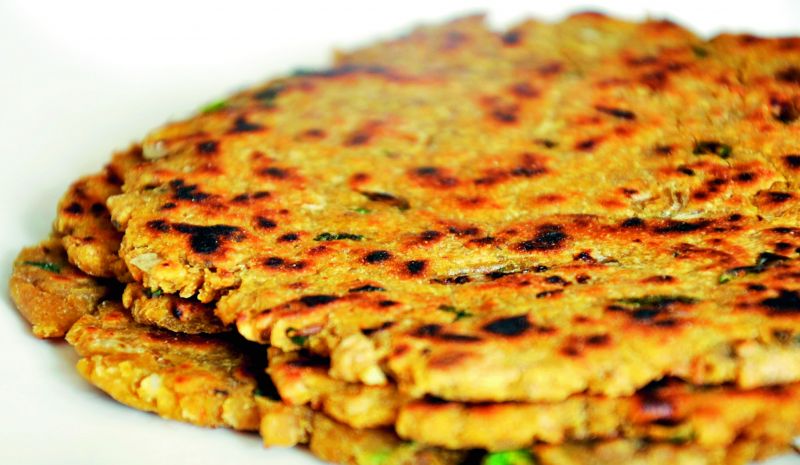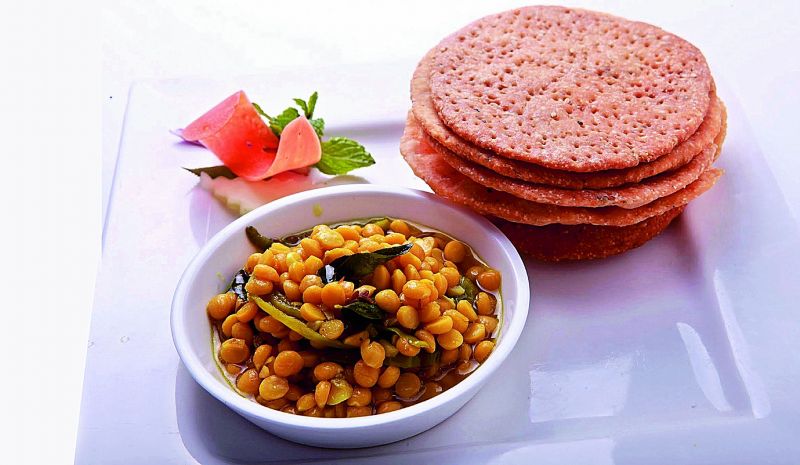A slow-cooked Sindhi delight
Often deemed as comfort food, Sindhi cuisine makes use of the simplest ingredients to make some of the most soulful food on our plate.

When Sindhis migrated to India from Pakistan, they brought with them their cuisine. In fact, food remains one of their most important connections to their homeland. True to its origin, Sindhi cuisine is a package of all things nice. Due to its roots, this cuisine is largely inspired by Mughals, Arabs, Turkhans and Soomras among others, which has resulted in the treasure trove that it is. You will find a lot of similarity when it comes to cooking methods. Though a large chunk of Sindhis in India today are Sindhi Hindus, there is a minority who belong to the Sikh community as well, which leads to a slight difference in the culinary traditions.
Sindhi food is characterised by slow cooking method. I have learned from my mother and mother-in-law how mutton is slow cooked to make our traditional Seyal Mutton. Unfortunately, there is a myth that the cuisine has very little to offer apart from this dish, and of course, another being that Sindhis are papad fans. It comes from a space where people are unaware of the variety that the cuisine has to offer. Besides Sindhi kadhi and seyal paav, they also have a variety of other lesser-known dishes like koki, Sindhi sai bhaji, sanna pakoda, batan papdi, and dal pakwaan.
Just like East Indians are known for their bottle masalas, Sindhis make use of cardamom. I have grown up watching my mother use cardamom in almost everything, even if it is sheera. I’ve also seen her make a mutton dish — foto bhuno gosht — with black pepper, cardamom and ghee, again a relatively unknown dish. Thanks to cookbooks and restaurants exploring lesser-known dishes now, cuisines like Sindhi are still thriving and attracting people from all over. Exploring these cuisines is the best way we can still hold on to our authentic roots and culture.
Sindhi Mutton
Ingredients
400 gm mutton, medium pieces
3 onions, medium chopped
2 tbsp ginger garlic paste
3-4 green chillies, minced or crushed
4 tomatoes, chopped
A pinch of haldi
3 tsp coriander powder
2 tsp red chilli powder
1 tsp garam masala powder
Salt to taste
2 cardamoms
2 to 3 cups of water
3 tbsp oil
3 to 4 tbsp coriander leaves
Whole garam masala: 1 bay leaf, 2 cloves and 1-inch cinnamon stick
Method:
Heat oil in a pressure cooker. Add bay leaf, cloves and cinnamon stick and fry for a minute.
Add the onions and fry till golden in colour.
Next, add the ginger-garlic paste and green chillies and fry till the aroma releases.
Put the mutton pieces and roast it till tender. Add all the dry masalas except the powdered garam masala.
Once the mutton has browned well (this could take approx. 20 minutes) add the tomatoes. Cook till the oil separates.
Add the coriander leaves, garam masala powder and hot water in the mutton.
Pressure-cook the mutton till tender. (Approx. 5-6 whistles and further cook on slow heat for 5 minutes)
Wait for the pressure to release completely and for it to cool down before opening the pressure cooker. Garnish with coriander leaves and serve with pao.
Koki
Ingredients
2 cups whole-wheat flour
½ cup chopped onions
2 tbsp chopped coriander
1 tbsp green chillies, finely chopped
3 tbsp melted ghee
Salt to taste

Method:
Combine all the ingredients in a deep bowl and knead into a stiff dough using water.
Divide the dough and roll it out. Prick it using a fork.
Heat a non-stick tava, grease it with ghee and slow cook each side with ghee till it turns crisp and golden brown.
Dal Pakwaan
Ingredients:
500 gm chana dal
2 green chillies
A pinch of haldi
1 tsp jeera
10 curry leaves
2 tbsp oil
Salt to taste
Red chilli powder to taste
Amchur to taste
Pepper to taste

For the pakwaan
Ingredients:
250 gm maida
2 tsp oil
Salt to taste
½ tsp shahi jeera
Water for kneading
For the chutney:
100 gm tamarind
50 gm jaggery
1 tsp jeera powder
1 tsp red chilli powder
Salt to taste
Method:
For the dal:
Soak chana dal, green chillies, haldi and salt for five to six hours. Then boil in cooker for two whistles.
Once the dal is cooked, give the tadka with jeera, curry leaves, oil and the dry masalas.
Next, heat oil and temper the dal. Sprinkle the sukha masala on top.
For the pakwaan:
Knead the dough and keep it aside.
Make small six to eight portions and roll each pakwaan as thin as possible.
Prick with a fork all over and fry till golden brown in colour.
For the chutney:
Boil the tamarind in water with jaggery. When tamarind has softened, add the masalas.
Add chopped onion, coriander and green chilles in the chutney.
Your dal pakwaan is ready to be served.
Rakhee Vaswani is a celebrity chef
